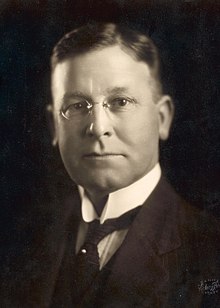- ↑ Lloyd, Clem (1988). "Parkhill, Sir Robert Archdale (1878–1947)". Australian Dictionary of Biography . Vol. 11. Melbourne University Press.
- ↑ "Liberal move". The Sydney Morning Herald . 6 July 1909.
- Lloyd, C. J. (1988). "Parkhill, Sir Robert Archdale (1878–1947)". Australian Dictionary of Biography . Canberra: National Centre of Biography, Australian National University. ISBN 978-0-522-84459-7. ISSN 1833-7538. OCLC 70677943 . Retrieved 10 October 2007.
Sir Archdale Parkhill | |
|---|---|
 | |
| Minister for Defence | |
| In office 12 October 1934 –20 November 1937 |
This article needs additional citations for verification .(October 2007) |